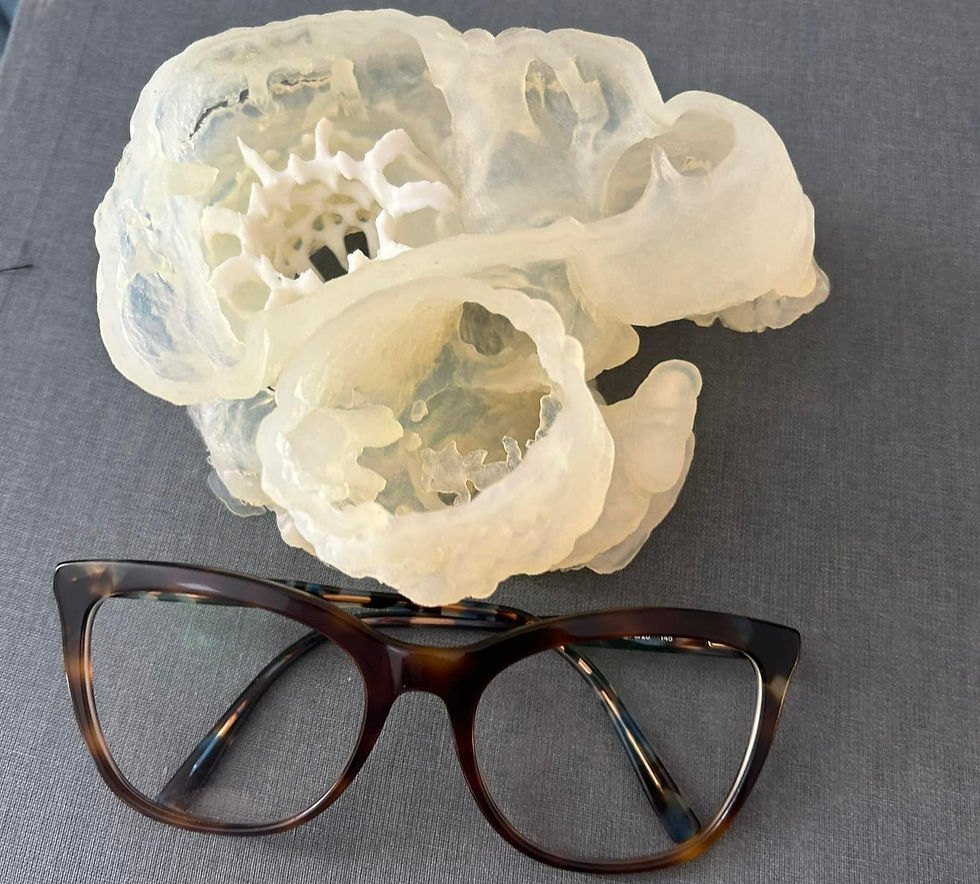Raising Our Voices: Why Heart Valve Disease Awareness Matters to Me
- maryrburrell
- Feb 21
- 3 min read
If you had to name the most overlooked heart condition, would heart valve disease (HVD) be on your list? Probably not. And honestly, before my own diagnosis, it wasn’t on mine either. But now? Now, it’s my everyday reality—and I can’t stay quiet about it.
Living with tricuspid valve regurgitation (TVR), congestive heart failure, and fighting my way back from hospice has taught me one thing: we have to start talking about this. Awareness saves lives. So, let’s talk.
What is Heart Valve Disease?
Heart valve disease happens when one (or more) of your heart’s valves doesn’t work the way it should. Imagine a door that won’t close all the way or one that won’t open properly—that’s what happens inside your heart.
For me, that faulty “door” was my tricuspid valve, which allowed too much blood to leak backward instead of moving forward like it was supposed to. Over time, that put an enormous strain on my heart and body, leading to swelling, exhaustion, and a long, terrifying decline.
There are different types of valve disease:
Stenosis: The valve narrows and doesn’t open fully, restricting blood flow.
Regurgitation (or Insufficiency): The valve doesn’t close properly, causing blood to leak backward.
Prolapse: The valve’s leaflets bulge or slip backward, often leading to regurgitation.
Some people are born with valve disease (congenital), while others develop it later in life due to aging, infections, or underlying conditions like high blood pressure or rheumatic fever.

The Symptoms I Ignored (And You Shouldn’t)
Here’s the thing: heart valve disease doesn’t always smack you in the face. It creeps up on you, disguising itself as “just getting older” or “being out of shape.” Looking back, I ignored so many red flags.
Shortness of breath that made simple tasks feel impossible (like walking to the bathroom)
Swelling in my legs, feet, and abdomen that wouldn’t go away
Extreme fatigue that sleep never fixed
Dizziness, lightheadedness, and scary fainting spells
Heart palpitations that felt like my heart was tap dancing inside my chest
If you’re experiencing anything like this—don’t wait. A simple stethoscope check can detect a murmur, which could be the first sign of valve disease. An echocardiogram can confirm it.
Who’s Most at Risk? (Hint: More People Than You Think)
Before I got sick, I thought heart disease was just something older men had to worry about. I was wrong.
Older Adults: The risk increases significantly after 65.
Women: We are underdiagnosed and often dismissed when we report symptoms.
African Americans & Other Racial/Ethnic Minorities: Healthcare disparities mean we often get diagnosed later—when it’s harder to treat.
People with a History of Heart Conditions: If you’ve had murmurs, heart failure, or infections like endocarditis, your risk is higher.
Anyone with a History of Rheumatic Fever or Radiation Treatment to the Chest
Why This Fight is Personal
I was sent to hospice in 2019. My body was failing me. My doctors told me there were no options left.
But I wasn’t done fighting.
In 2020, I got a second chance when I was accepted into a clinical trial for a new tricuspid valve replacement device. That procedure saved my life. And now, I speak up because too many people don’t know they even have this disease until it’s too late.

What You Can Do (Right Now!)
Listen to your body. If something feels “off,” don’t ignore it.
Talk to your doctor. Ask for a stethoscope check and, if needed, an echocardiogram.
Spread the word. So many people don’t realize heart valve disease exists, let alone that they could have it.
Support advocacy efforts. Join organizations like Heart Valve Voice US that fight for better awareness and treatments.
I survived for a reason. And that reason is to make sure no one else goes unheard, undiagnosed, or untreated.
Have you or someone you love been affected by heart valve disease? Let’s talk. Drop a comment below or share your experience—I’d love to hear your story.❤️🩹🥑
#HospiceSurvivor #HeartValveAwareness #ListenToYourHeart #WomenAndHeartDisease #TricuspidValveAwareness #PatientAdvocacy
Comments